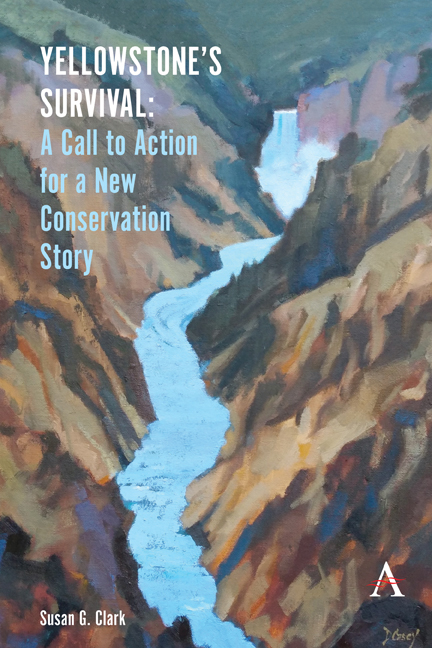 Yellowstone's Survival - A Call to Action for a New Conservation Story
Yellowstone's Survival - A Call to Action for a New Conservation Story The Greater Yellowstone Ecosystem (GYE) is one of the finest examples of natural resources our nation has to choose to protect. It is home to millions of acres of preeminent public lands including Yellowstone and Grand Teton National Parks, National Wildlife Refuges, National Forest, and Bureau of Land Management lands. The GYE encompasses places whose names resonate as unique, beautiful, wild, remote, exciting and protected, while being accessible for a wide array of recreational and, yes, development opportunities. Fortunately, the GYE is an ecosystem that has the amenities and diversity to support a wide range of lifestyles for residents and visitors alike.
The GYE is currently experiencing increased development to accommodate the migration of people wanting to live in the area and is experiencing an equally dramatic increase in visitation from around the world. More people means more pressure on the ecosystem, which then calls for new, innovative, and coordinated approaches to managing these resources.
At over 20 million acres, the GYE is the largest nearly intact ecosystem in the continental United States. Fifteen million of these acres are public lands managed by four federal agencies. The remainder are managed by three state governments, numerous county and local governments, and private landowners. While these entities have organizations in place to accomplish some mutual goals, they are often not ecosystem goals. The rapid social and environmental changes are causing unintended harmful impacts and to truly solve these issues, they must be considered on an ecosystem basis. The conflicting missions of preservation and use and the differing priorities of the entities often put the long-term preservation of our ecosystems and the opportunities they provide at risk.
In this book, Dr. Susan Clark lays out a road map of productive ways to discuss, learn about, and act upon these challenges. Her approach to seeking solutions is unique in that she reaches far beyond the traditional boundaries of her field of ecology to integrate common sense, geography, psychology, sociology, anthropology, philosophy, policy sciences, and hope. She lays out our need for a rapid, new, colearning network to move us forward quickly in a responsible way to conserve greater Yellowstone.
To save this book to your Kindle, first ensure no-reply@cambridge.org is added to your Approved Personal Document E-mail List under your Personal Document Settings on the Manage Your Content and Devices page of your Amazon account. Then enter the ‘name’ part of your Kindle email address below. Find out more about saving to your Kindle.
Note you can select to save to either the @free.kindle.com or @kindle.com variations. ‘@free.kindle.com’ emails are free but can only be saved to your device when it is connected to wi-fi. ‘@kindle.com’ emails can be delivered even when you are not connected to wi-fi, but note that service fees apply.
Find out more about the Kindle Personal Document Service.
To save content items to your account, please confirm that you agree to abide by our usage policies. If this is the first time you use this feature, you will be asked to authorise Cambridge Core to connect with your account. Find out more about saving content to Dropbox.
To save content items to your account, please confirm that you agree to abide by our usage policies. If this is the first time you use this feature, you will be asked to authorise Cambridge Core to connect with your account. Find out more about saving content to Google Drive.